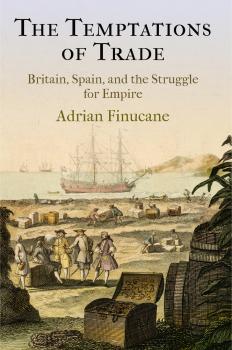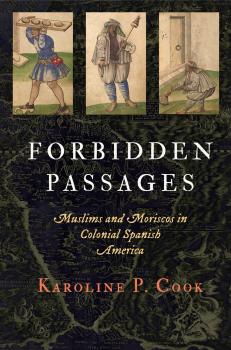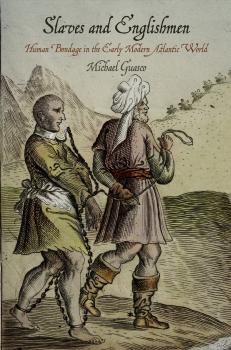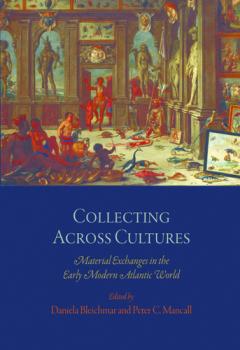The Early Modern Americas
Скачать книги из серии The Early Modern AmericasDeath by Effigy
On July 21, 1578, the Mexican town of Tecamachalco awoke to news of a scandal. A doll-like effigy hung from the door of the town's church. Its two-faced head had black chicken feathers instead of hair. Each mouth had a tongue sewn onto it, one with a forked end, the other with a gag tied around it. Signs and symbols adorned the effigy, including a sambenito , the garment that the Inquisition imposed on heretics. Below the effigy lay a pile of firewood. Taken together, the effigy, signs, and symbols conveyed a deadly message: the victim of the scandal was a Jew who should burn at the stake. Over the course of four years, inquisitors conducted nine trials and interrogated dozens of witnesses, whose testimonials revealed a vivid portrait of friendship, love, hatred, and the power of rumor in a Mexican colonial town. A story of dishonor and revenge, Death by Effigy also reveals the power of the Inquisition's symbols, their susceptibility to theft and misuse, and the terrible consequences of doing so in the New World. Recently established and anxious to assert its authority, the Mexican Inquisition relentlessly pursued the perpetrators. Lying, forgery, defamation, rape, theft, and physical aggression did not concern the Inquisition as much as the misuse of the Holy Office's name, whose political mission required defending its symbols. Drawing on inquisitorial papers from the Mexican Inquisition's archive, Luis R. Corteguera weaves a rich narrative that leads readers into a world vastly different from our own, one in which symbols were as powerful as the sword.
The Temptations of Trade
The British and the Spanish had long been in conflict, often clashing over politics, trade, and religion. But in the early decades of the eighteenth century, these empires signed an asiento agreement granting the British South Sea Company a monopoly on the slave trade in the Spanish Atlantic, opening up a world of uneasy collaboration. British agents of the Company moved to cities in the Caribbean and West Indies, where they braved the unforgiving tropical climate and hostile religious environment in order to trade slaves, manufactured goods, and contraband with Spanish colonists. In the process, British merchants developed relationships with the Spanish—both professional and, at times, personal. The Temptations of Trade traces the development of these complicated relationships in the context of the centuries-long imperial rivalry between Spain and Britain. Many British Merchants, in developing personal ties to the Spanish, were able to collect potentially damaging information about Spanish imperial trade, military defenses, and internal conflict. British agents juggled personal friendships with national affiliation—and, at the same time, developed a network of illicit trade, contraband, and piracy extending beyond the legal reach of the British South Sea Company and often at the Company's direct expense. Ultimately, the very smuggling through which these empires unwittingly supported each other led to the resumption of Anglo-Spanish conflict, as both empires cracked down on the actions of traders within the colonies. The Temptations of Trade reveals the difficulties of colonizing regions far from strict imperial control, where the actions of individuals could both connect empires and drive them to war.
Forbidden Passages
During the sixteenth and seventeenth centuries, Spanish authorities restricted emigration to the Americas to those who could prove they had been Catholic for at least three generations. In doing so, they hoped to instill religious orthodoxy in the colonies and believed Muslim converts, or Moriscos, would hamper efforts to convert indigenous people to Catholicism. Nevertheless, Moriscos secretly made the treacherous journey across the ocean, settling in the forbidden territories and influencing the nature of Spanish colonialism. Once landed, Morisco men and women struggled to define and practice their religion or pursue their trades, all while experiencing increasing anxiety about their place in the emerging Spanish empire. Many Moriscos were accused by authorities of descending from Muslims or practicing Islam in secret and turned to the courts to assert their legitimacy. Forbidden Passages is the first book to document and evaluate the impact of Moriscos in the early modern Americas. Through close examination of sources that few historians have used—some one hundred cases of individuals brought before the secular, ecclesiastical, and inquisitorial courts—Karoline P. Cook shows how legislation and attitudes toward Moriscos in Spain assumed new forms and meanings in colonial Spanish America. Moriscos became not simply individuals struggling to join a community that was increasingly hostile to them but also symbols that sparked authorities' fears about maintaining religious purity in the face of territorial expansion. Cook reveals how Morisco emigrants shined a light on the complicated question of what it meant to be Spanish in the New World.
The Plantation Machine
Jamaica and Saint-Domingue were especially brutal but conspicuously successful eighteenth-century slave societies and imperial colonies. These plantation regimes were, to adopt a metaphor of the era, complex «machines,» finely tuned over time by planters, merchants, and officials to become more efficient at exploiting their enslaved workers and serving their empires. Using a wide range of archival evidence, The Plantation Machine traces a critical half-century in the development of the social, economic, and political frameworks that made these societies possible. Trevor Burnard and John Garrigus find deep and unexpected similarities in these two prize colonies of empires that fought each other throughout the period. Jamaica and Saint-Domingue experienced, at nearly the same moment, a bitter feud between planters and governors, a violent conflict between masters and enslaved workers, a fateful tightening of racial laws, a steady expansion of the slave trade, and metropolitan criticism of planters' cruelty. The core of The Plantation Machine addresses the Seven Years' War and its aftermath. The events of that period, notably a slave poisoning scare in Saint-Domingue and a near-simultaneous slave revolt in Jamaica, cemented white dominance in both colonies. Burnard and Garrigus argue that local political concerns, not emerging racial ideologies, explain the rise of distinctive forms of racism in these two societies. The American Revolution provided another imperial crisis for the beneficiaries of the plantation machine, but by the 1780s whites in each place were prospering as never before—and blacks were suffering in new and disturbing ways. The result was that Jamaica and Saint-Domingue became vitally important parts of the late eighteenth-century American empires of Britain and France.
The Opened Letter
By the early eighteenth century, the rapid expansion of the British empire had created a technological problem: communication and networking became increasingly vital yet harder to maintain. As colonial possessions and populations grew and more individuals moved around the globe, Britons both at home and abroad required a constant and reliable means of communication to conduct business, plumb intellectual concerns, discuss family matters, run distant estates, and exchange news. As face-to-face communication became more intermittent, men and women across the early modern British world relied on letters. In The Opened Letter , historian Lindsay O'Neill explores the importance and impact of networking via letter-writing among the members of the elite from England, Ireland, and the colonies. Combining extensive archival research with social network digital technology, The Opened Letter captures the dynamic associations that created a vibrant, expansive, and elaborate web of communication. The author examined more than 10,000 letters produced by such figures as Virginia planters William Byrd I and his son William Byrd II; the Anglo-Irish nobleman John Perceval; the newly minted Duke of Chandos, James Brydges, and his wife Cassandra Brydges; and Sir Hans Sloane, the president of the Royal Society, and his colleague Peter Collinson. She also mined letters from the likes of Nicholas Blundell, a Catholic member of the Lancashire gentry, and James Eliot, a London merchant and ardent Quaker. The Opened Letter reassembles and presents the vital individual and interlocking epistolary webs constructed by disparate groups of letter writers. These early social networks illuminate the structural, social, and geographic workings of the British world as the nation was becoming a dominant global power.
The Bishop's Utopia
In December 1788, in the northern Peruvian city of Trujillo, fifty-one-year-old Spanish Bishop Baltasar Jaime Martínez Compañón stood surrounded by twenty-four large wooden crates, each numbered and marked with its final destination of Madrid. The crates contained carefully preserved zoological, botanical, and mineral specimens collected from Trujillo's steamy rainforests, agricultural valleys, rocky sierra, and coastal desert. To accompany this collection, the Bishop had also commissioned from Indian artisans nine volumes of hand-painted images portraying the people, plants, and animals of Trujillo. He imagined that the collection and the watercolors not only would contribute to his quest to study the native cultures of Northern Peru but also would supply valuable information for his plans to transform Trujillo into an orderly, profitable slice of the Spanish Empire. Based on intensive archival research in Peru, Spain, and Colombia and the unique visual data of more than a thousand extraordinary watercolors, The Bishop's Utopi a recreates the intellectual, cultural, and political universe of the Spanish Atlantic world in the late eighteenth century. Emily Berquist Soule recounts the reform agenda of Martínez Compañón—including the construction of new towns, improvement of the mining industry, and promotion of indigenous education—and positions it within broader imperial debates; unlike many of his Enlightenment contemporaries, who elevated fellow Europeans above native peoples, Martínez Compañón saw Peruvian Indians as intelligent, productive subjects of the Spanish Crown. The Bishop's Utopia seamlessly weaves cultural history, natural history, colonial politics, and art into a cinematic retelling of the Bishop's life and work.
Slaves and Englishmen
Technically speaking, slavery was not legal in the English-speaking world before the mid-seventeenth century. But long before race-based slavery was entrenched in law and practice, English men and women were well aware of the various forms of human bondage practiced in other nations and, in less systematic ways, their own country. They understood the legal and philosophic rationale of slavery in different cultural contexts and, for good reason, worried about the possibility of their own enslavement by foreign Catholic or Muslim powers. While opinions about the benefits and ethics of the institution varied widely, the language, imagery, and knowledge of slavery were a great deal more widespread in early modern England than we tend to assume. In wide-ranging detail, Slaves and Englishmen demonstrates how slavery shaped the ways the English interacted with people and places throughout the Atlantic world. By examining the myriad forms and meanings of human bondage in an international context, Michael Guasco illustrates the significance of slavery in the early modern world before the rise of the plantation system or the emergence of modern racism. As this revealing history shows, the implications of slavery were closely connected to the question of what it meant to be English in the Atlantic world.







